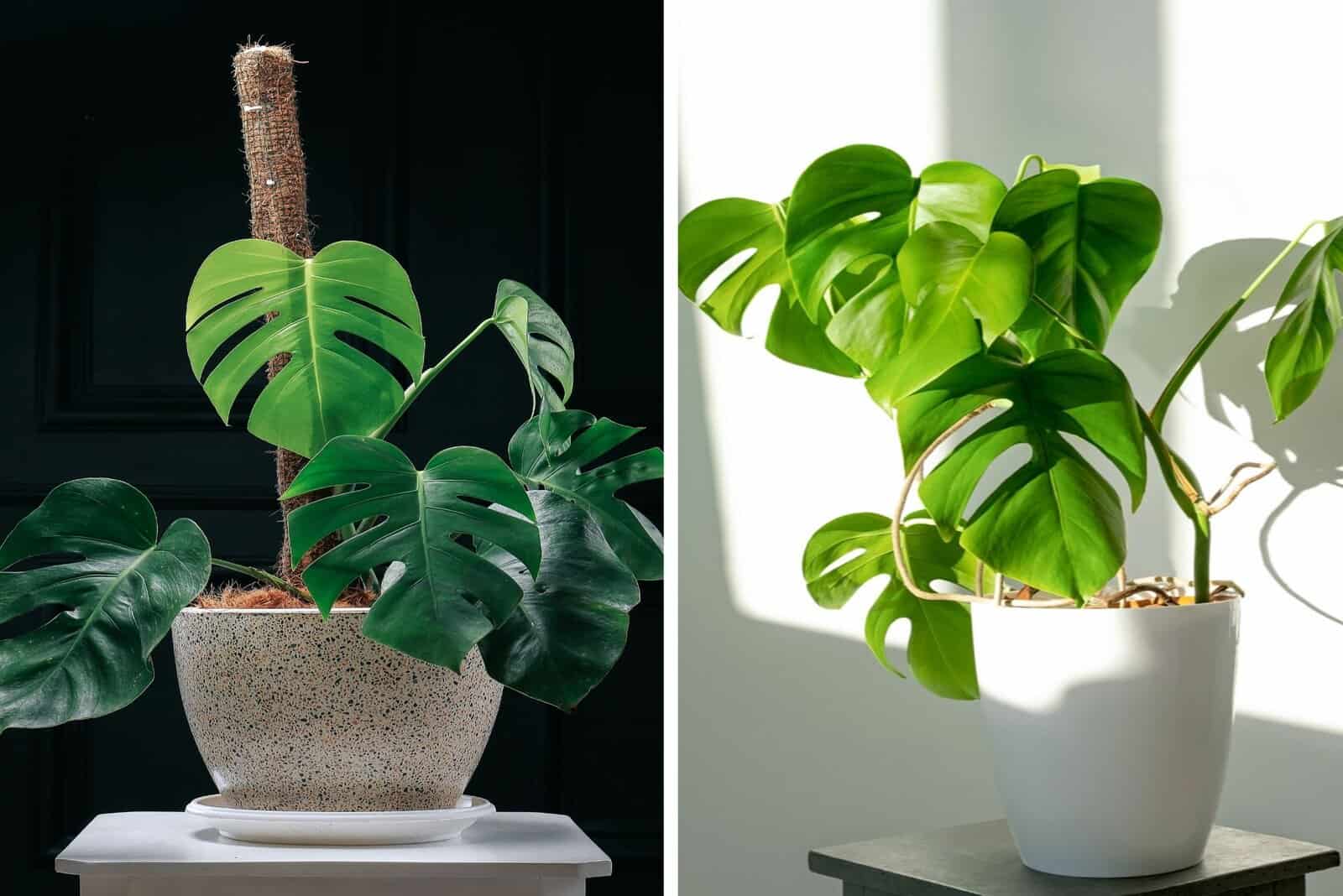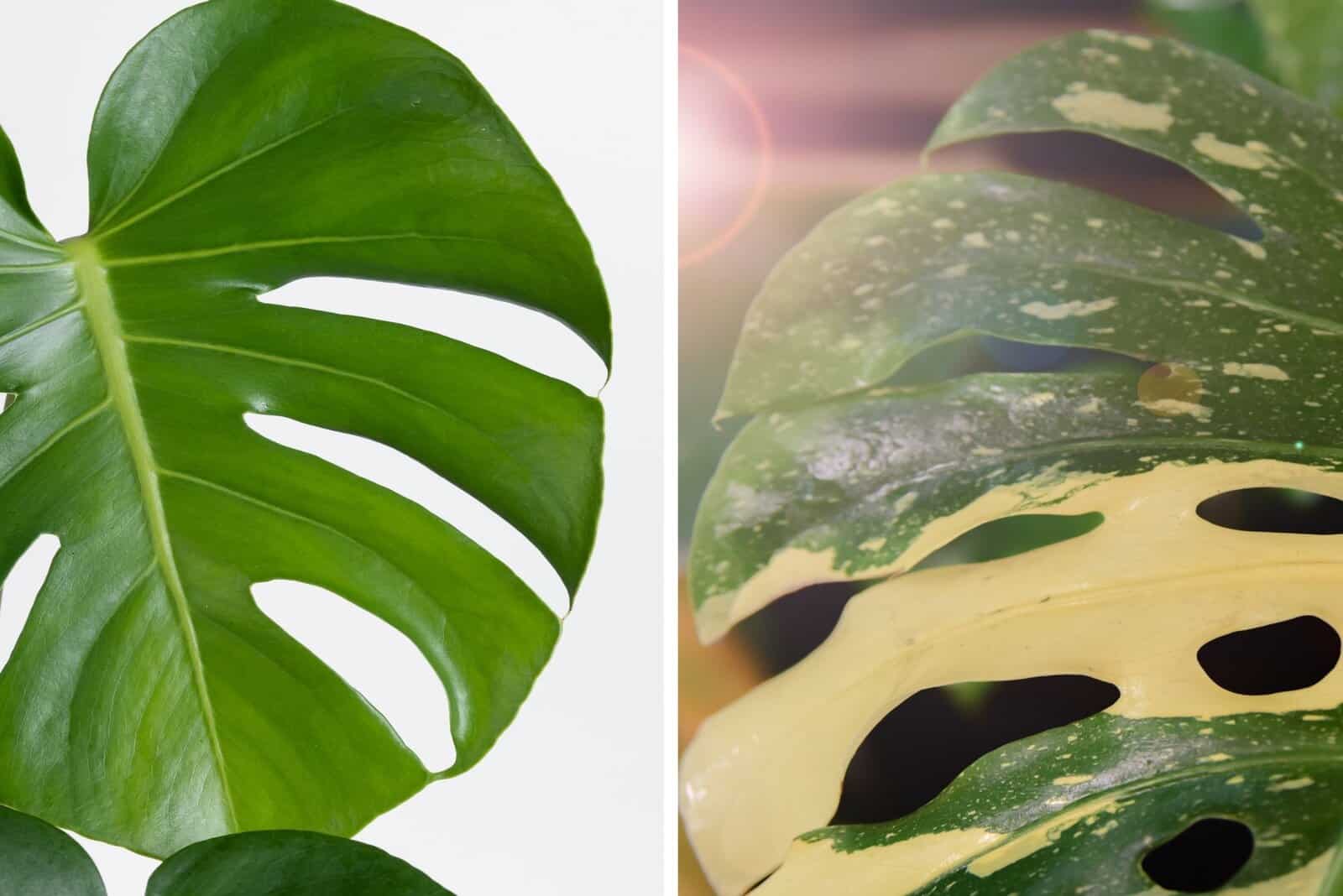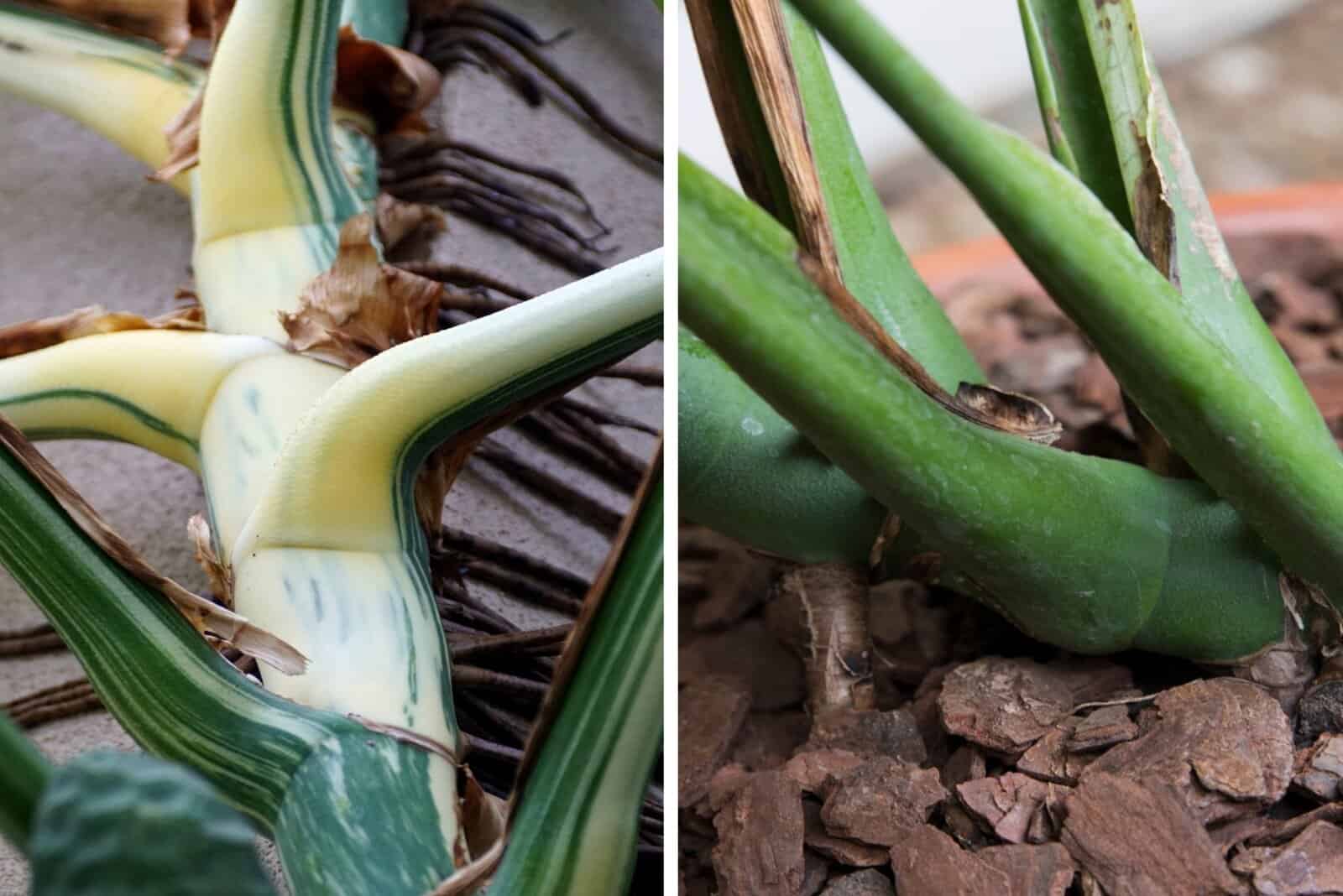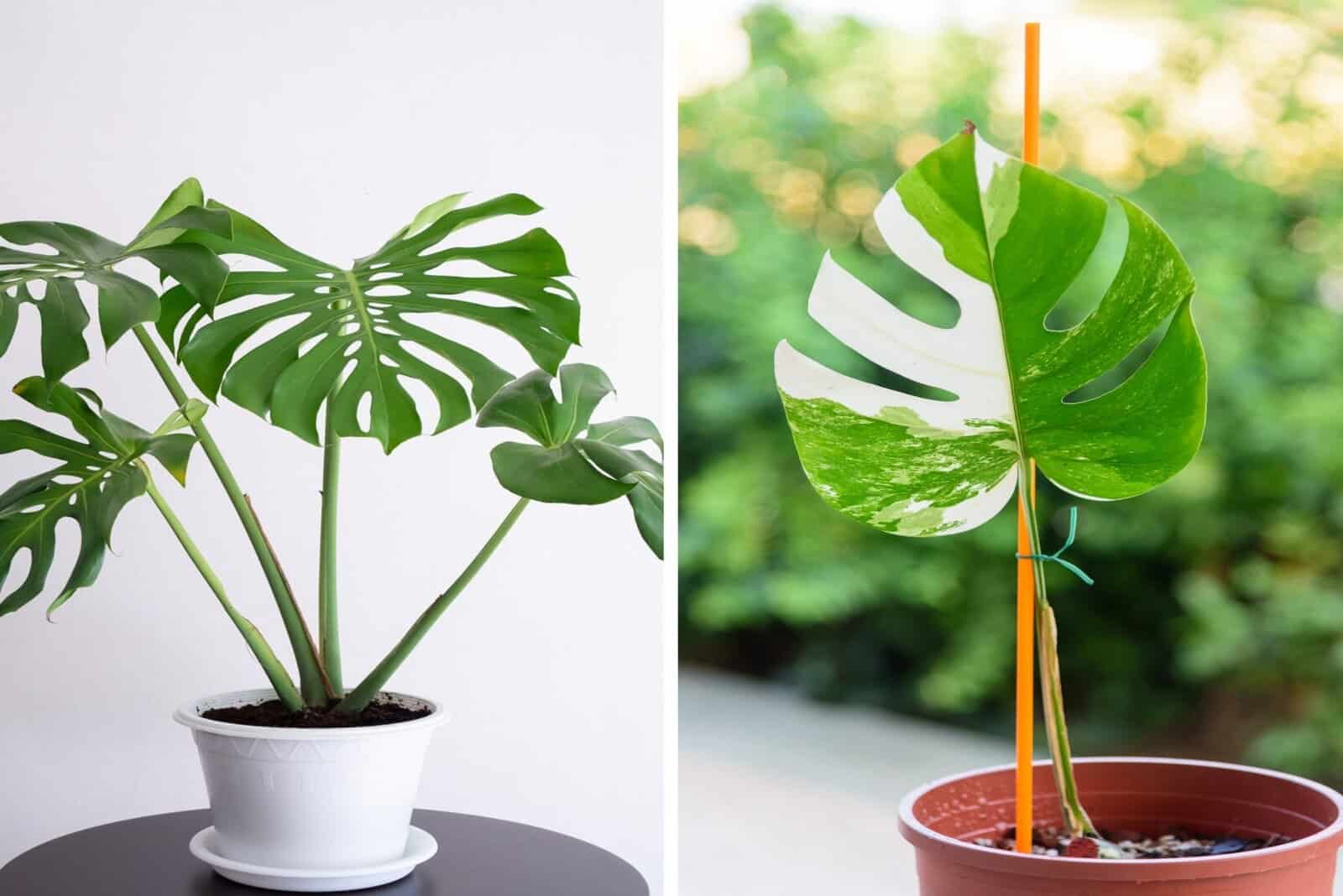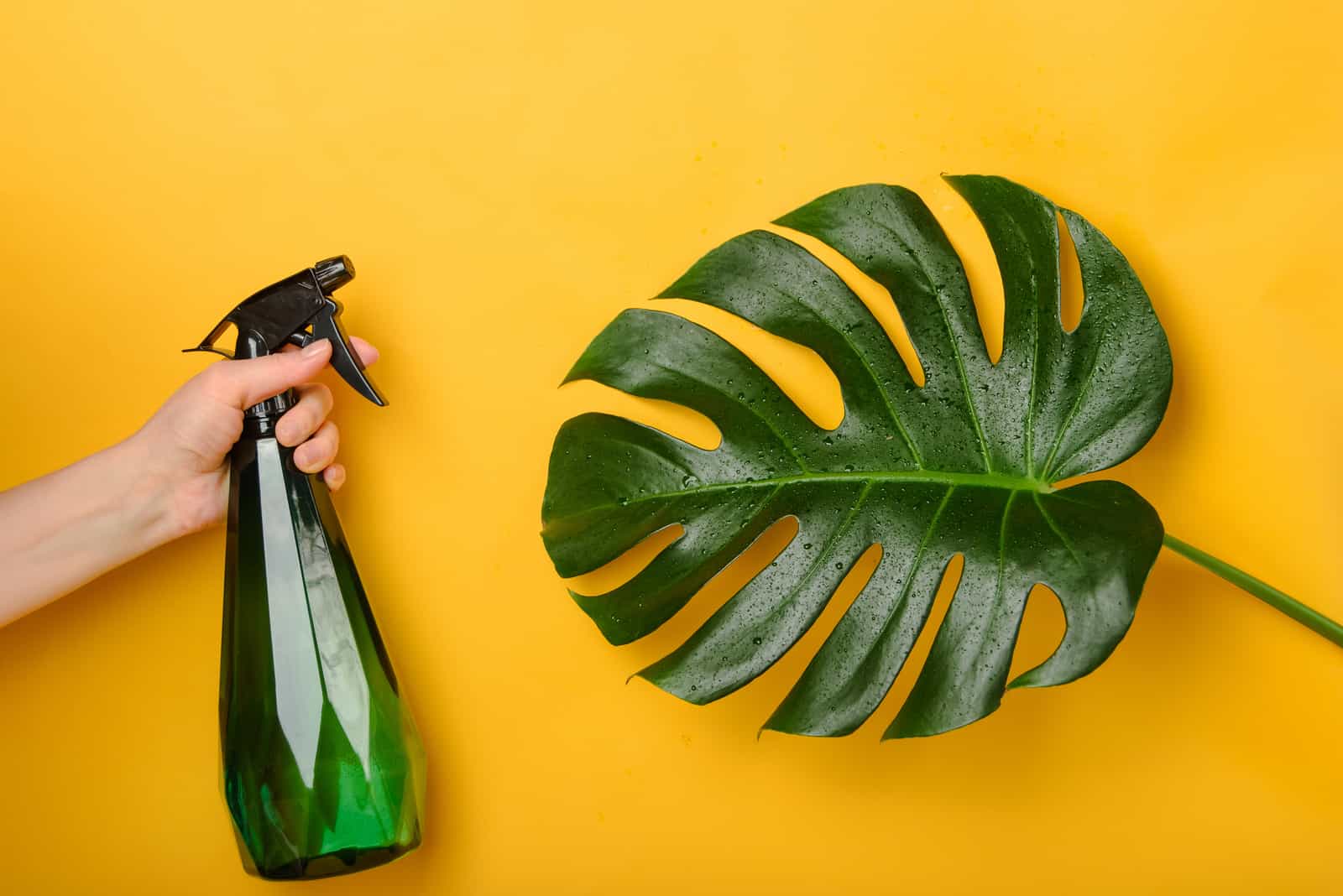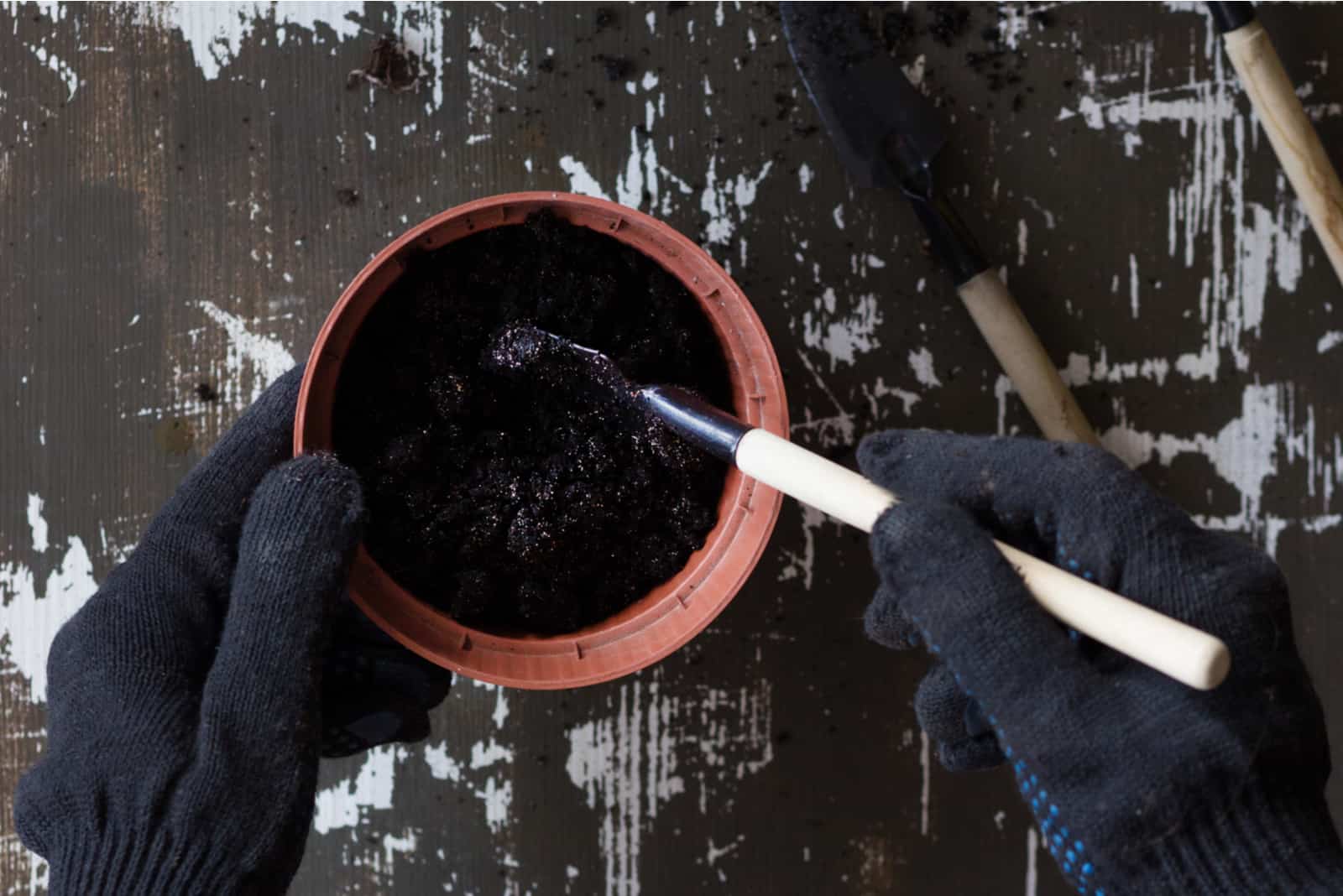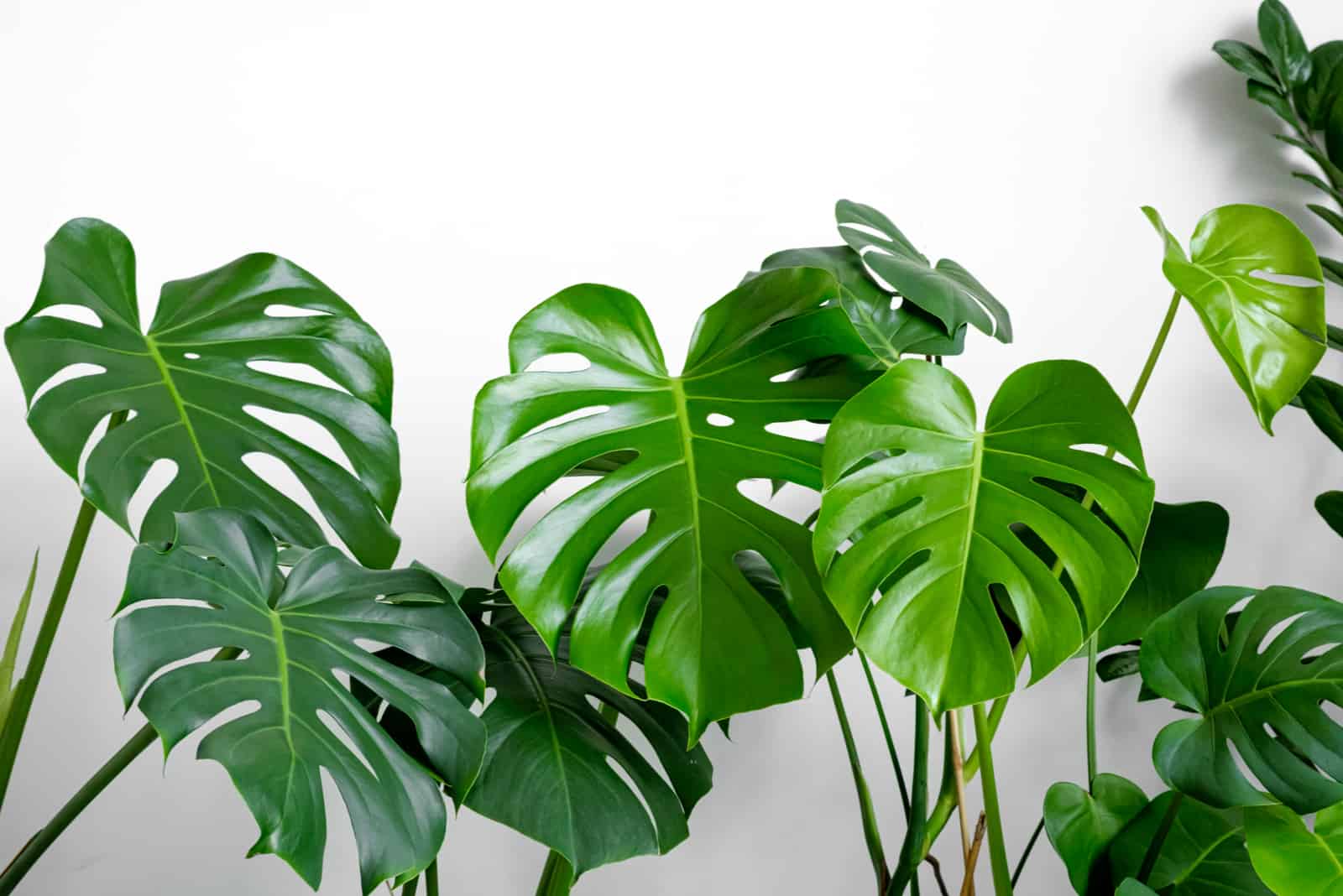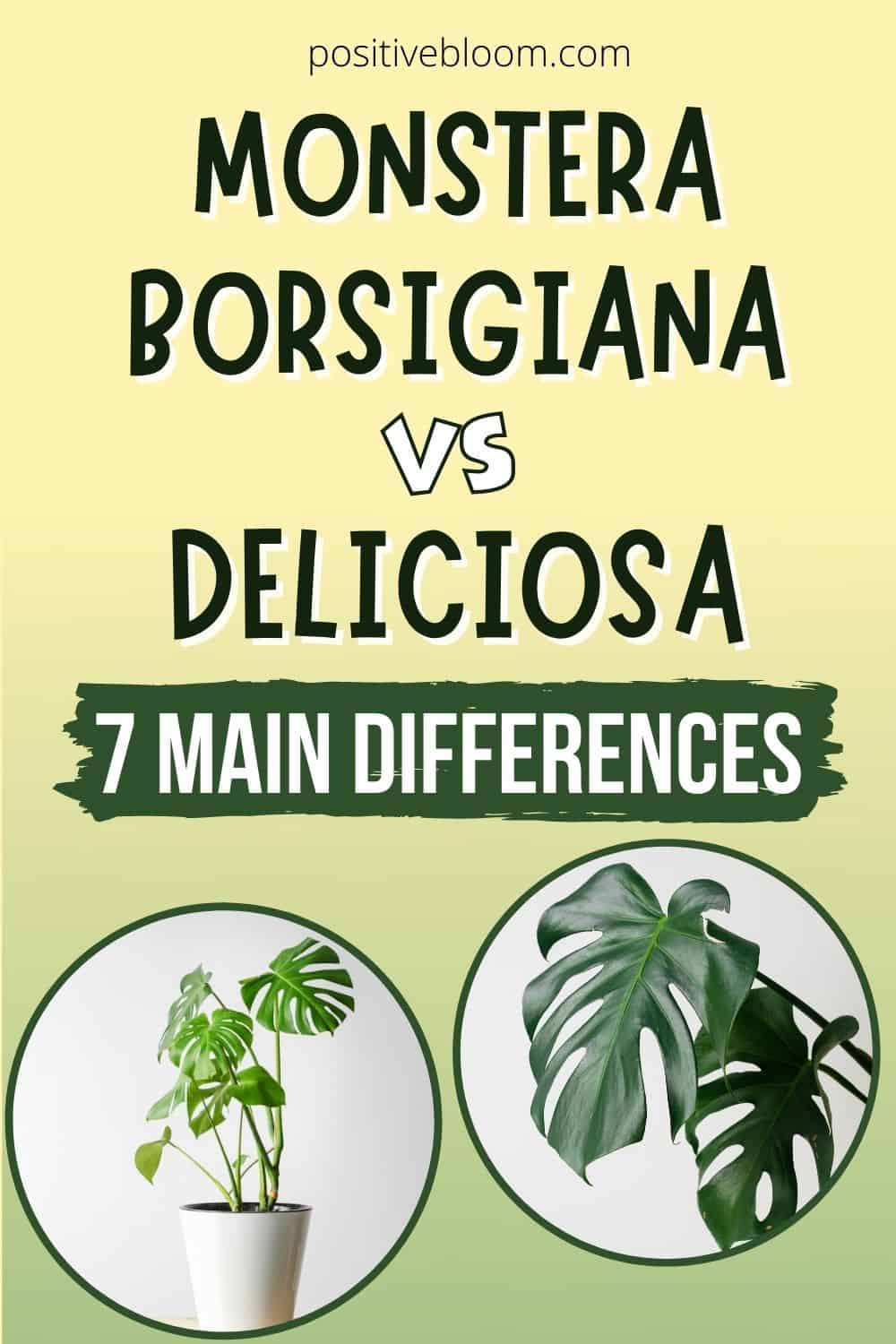I’m sure you’ve already heard about the Monstera Deliciosa, but there is another Monstera plant similar to the Deliciosa – the Monstera Borsigiana.
If you want to know the differences between these two plants, read on to discover everything you need to know.
There are 7 main differences between these two plants.
Monstera Borsigiana vs Deliciosa differ in growth rate and habit, leaves, stem, geniculum, taxonomy, and even price.
But before we move on, let’s look at some basic info:
[table id=20 /]
Monstera Borsigiana Vs Deliciosa: How To Differentiate Between Them
Although very similar in appearance, these plants grow differently and have different growing habits. The leaves and stems are also different. We will also look at the Geniculum and taxonomic hierarchy, as well as the price you can expect to pay if you decide to buy one of these plants.
Let’s take a look.
1. Growth Rate
The Monstera Borsigiana grows faster than the Monstera Deliciosa. If you place these two houseplants side by side, you will notice that one has suddenly become taller.
The Monstera Deliciosa doesn’t grow slow compared to many other Monstera varieties, but it has a slower growth rate than the Borsigiana plant.
Your Deliciosa plant can grow approximately two feet a year.
Commonly known as the Split-Leaf Philodendron or Philodendron Monstera, a Deliciosa can be the same size or even taller (30 feet maximum) than a Borsigiana.
You may be wondering why anyone would want to grow these plants inside.
They have become indoor plants due to their wonderful looks, and they really are spectacular, so it’s worth making room in your house or office to grow either of them.
2. Growth Habit
Another difference with Monstera Borsigiana vs Deliciosa is in the way they spread. This is the first thing you will notice when you analyze these plants side by side.
“True Deliciosa” grows horizontally and broader than the Borsigiana plant, which means that it will eventually extend its area.
Another thing connected to their growth habit is that as Deliciosa is a slow climber, it will slide over the floor in its early stages of growth.
However, as it matures it will transform into a vine.
On the other hand, the Monstera Borsigiana has a vine growth habit from the beginning.
You will have to prepare some sort of stack for your Borsigiana when you buy it as the plant will need support from the very beginning.
If you are a tidy person, you may want to consider buying a Borsigiana because this Monstera plant doesn’t have leafstalk and stems like the Deliciosa.
3. Leaves
Another very noticeable difference is in the leaf size.
The Monstera Borsigiana has smaller leaves and can grow up to 1.6 feet tall.
Unlike Borsigiana’s leaves, the Monstera Deliciosa’s leaves, in their natural habitat, can grow up to 3 feet tall, which makes the plant particularly stunning.
These differences are related to the conditions in which both plants are grown.
This means that if you ensure the same conditions, or to be more precise, if both plants are in the same room, it will be easier to differentiate between them.
4. Stem
The fourth difference you will notice while observing these plants is the space between their nodes.
When looking at the stems of the monstera deliciosa vs borsigiana, you will notice a more considerable distance between the M.Deliciosa’s nodes.
To find the nodes, look at the branching twigs, leaves, or buds. The nodes appear where petioles are holding the leaves.
The faster vine growth of Borsigiana is actually caused by the more considerable distance between nodes.
5. Geniculum
The joint of the stem that attaches the leaves or the leafstalk, known as the geniculum, is another difference between Monstera Borsigiana and M.Deliciosa.
The Geniculum of the Borsigiana is typical, similar to the geniculum of many other plants.
On the other hand, Deliciosa’s geniculum is wrinkled or wavy. These wrinkles and waves appear at the petiole’s ends where they meet the leaves, and are commonly known as ruffles.
There is no difference in ruffles in the early stages of development. The difference appears when they are halfway or completely matured.
Here’s a visual representation of the difference between these Monstera plants.
6. Taxonomy
There is a slight difference in the taxonomy of these two plants.
Identification, naming, and classifying are involved in taxonomy.
Monstera Deliciosa and Monstera Borsigiana share the exact synonym, which means that they are different types under the same taxon.
7. Price
If someone gave either of these plants to you as a gift, or you’ve simply forgotten how much you paid for it, you can always check the price on Amazon.
There is a slight difference in price between these two Monstera plants.
The Monstera Deliciosa’s price ranges from $20 to $100, and can be even higher in some places.
On the other hand, the Borsigiana houseplant is cheaper, though you must be sure not to mistake it for Variegated Monstera Albo or Borsigiana Albo Variegata, one of the most expensive houseplants in the world, along with the Monstera Adansonii.
Monstera Albo Borsigiana are expensive because they grow very, very slowly, and they are mainly propagated until they mature.
I must remind you that there is one more variegated and cheaper version of the Monstera, the so-called Thai Constellation, so get yourself one of those if you don’t want to spend a fortune on a plant.
Monstera Borsigiana Vs Deliciosa Similarities
Now that you have learned the differences, let’s take a look at the similarities that lead to the Monstera Borsigiana often being mistaken for the Monstera Deliciosa.
Root System
The development of many aerial roots is something both plants share.
This is similar to the orchid root system. Later in the “Care Guide” section, you will discover the conditions required to ensure their healthy development.
The roots of these two plants are firm, which is why they are capable of climbing high on trees in their natural habitat.
The Shape Of The Leaves
As previously mentioned, the Deliciosa’s leaves are larger than the Borsigiana, but they are similar in shape.
Beautiful, heart-shaped green leaves are typical for both plants.
The cut base of the leaves spreads to the surface and ends with tapering axes.
As the plants grow, their heart-shaped leaves may lose the perfect heart shape, but will still be noticeable.
The Structure Of The Leaves
The leaves of both plants look like they were perfectly cut with scissors.
The cuts of the leaves are egg-like in shape and may vary in appearance, size, and even number.
The leaves’ holes are naturally developed, and these holes are known as fenestration.
These holes and veins are significant for the uptake of nutrients and moisture.
The plants developed these holes to survive heavy rains and strong winds. The holes serve as weight relief, and allow rain to easily access the leaves.
Now that you know the similarities, it will be much easier to differentiate Monstera Borsigiana vs Deliciosa.
All the things mentioned above relate to the healthy growth of the two plants.
Read on to find out more about plant care.
Care Guide
Let’s find out what requirements need to be fulfilled for the healthy growth of both these plants.
Humidity Requirements
These plants are tropical in their natural habitat, so you should do your best to imitate these conditions in your home.
Pay close attention to moisture levels, which must be high so as to avoid any complications. However, if the humidity level is too high, it can also cause damage.
If the humidity level is lower than it should be, you can increase it using a humidifier.
Keep the plants away from air conditioners and vents because they dry out the air and reduce the humidity level.
Temperature Requirements
These plants require higher temperatures, which are found in their native habitat.
It’s essential to keep the temperature between 45 to 80°F.
Although these houseplants can grow in lower temperatures, don’t let the temperature drop below 45°F to avoid any damage.
Heat increases moisture requirements, so keeping these plants away from any heat sources is essential.
This includes radiators and fireplaces.
Lighting Requirements
As previously mentioned, the Monstera Borsigiana and Deliciosa are tropical plants.
This may suggest the need for more light, but it’s essential to remember that tropical plants grow under the rainforest canopy, so they aren’t exposed to much direct sunlight in their natural habitat.
It’s best to use bright, indirect light so the plant can grow faster and healthier.
Of course, if you want to make sure that your atom plant always receives enough light, you can use a light meter.
Interestingly, both plants respond well to fluorescent light, so if you want to get one for your office, it will grow just fine!
Soil Requirements
Choosing the right potting soil mix is another vital part of caring for an atom plant.
The potting mix should be peat based.
Add extra perlite and peat moss to really help your Monstera plants thrive.
Choose well-draining soil. You can improve drainage if you use a pot that has drainage holes.
The required pH level is 5.5-6.5 (alkaline pH).
Watering
The best watering schedule for this indoor plant is to wait until the potting soil dries at least two inches down (the upper layer has to be dry)
Be careful not to overwater it because this could cause root rot.
Fertilizing
Both Monstera Borsigiana and Monstera Deliciosa need to be fertilized every two months.
You should choose a fertilizer rich in potassium and nitrogen.
Propagation By Stem Cutting
A fantastic thing about these plants is that they can be propagated easily! However, you can’t propagate Monstera without a node. Let’s take a look at how to propagate by stem cutting.
• Take a clean and sterile knife and cut off a stem with a couple of nodes. Only take stems that have leaves on them as the leaves will be needed for energy absorption in the new growth.
• Place the cuttings in a jar filled with water. You can either use a small container or a large glass jar filled with water.
• Put the container or jar somewhere with indirect light.
• Wait for about two to five weeks and then check the roots. If the roots are long enough (a few inches), you can replant.
Repotting
These plants should be repotted when the roots overgrow the pot.
This will help you avoid them being rootbound.
The new pot should be 2 to 4 inches larger than the previous one.
Common Issues
Most issues with Monstera Borsigiana and M.Deliciosa are caused by overwatering.
Check the water level if you notice:
• The leaves turning yellow
• Brown leaves or edges
• Black leaves or spots
Caution: Toxicity
Monstera Borsigiana and Monstera Deliciosa are both toxic. You must keep these plants out of the reach of young children and pets.
The plants aren’t dangerous unless ingested, but young children and pets are unaware of the consequences, so they could consume the leaves without realizing the danger.
Ingesting leaves can cause nausea and swelling of the lips, mouth, and throat.
Always remove every fallen leaf from the floor.
Wrapping Up
We hope that you are now able to differentiate between Monstera Borsigiana vs Monstera Deliciosa.
As we provided you with similarities and a care guide, we also hope you can now take proper care of these two plants.
If you learn everything about these two plants, who knows, you may be able to propagate Monsteras and make a fortune! Just remember to wear gloves all the time!
Until next time!
Like this post? Share or pin it for later!

